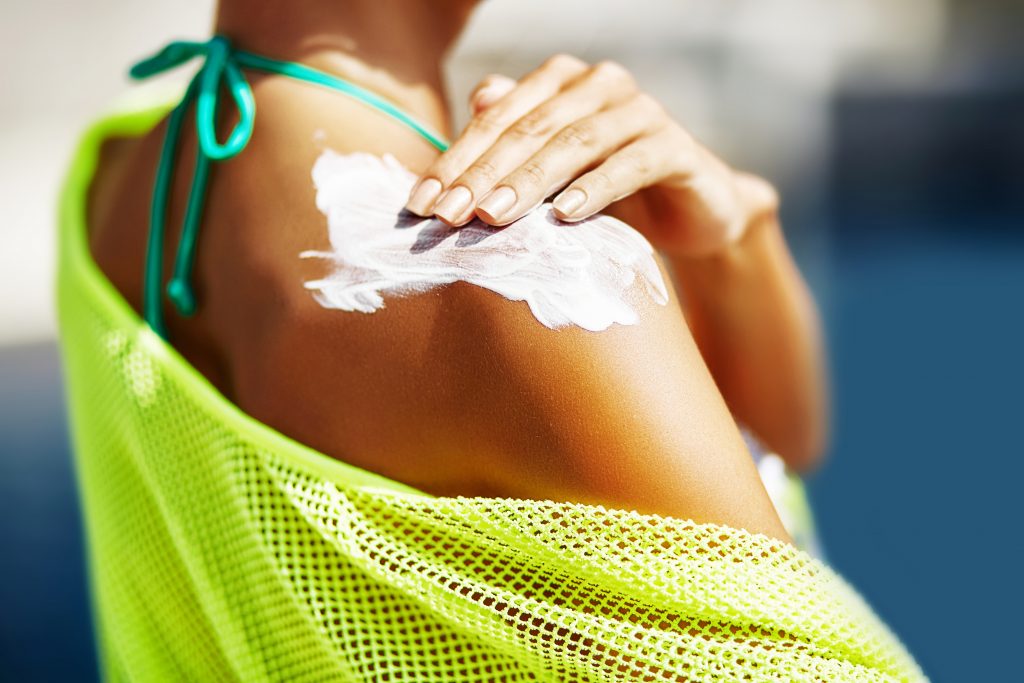As we continue to learn more about the potentially damaging ingredients in chemical sunscreens (namely oxybenzone, which has been shown to mimic hormones in the body, and retinyl palmitate, a skin irritant), it can be tempting to throw in the proverbial beach towel and make your own sunscreen with ingredients you know to be safe. But is that such a good idea? Let’s dive into the research.
DIY Sunscreen! What You Need to Know!
Should you be making your own sunscreen?
While we’re all about experimenting with DIY beauty treatments every once in a while, when it comes to sunscreen protection, you don’t want to take any risks.
Homemade sunscreen recipes usually call for some combination of carrier oils, shea butter, beeswax, and active ingredients like zinc oxide to block out the sun’s rays. However, a 2016 study on common oils like canola, coconut, and olive found that they are far less effective at blocking ultraviolet rays than sunscreen. Plus, zinc as a raw ingredient is thought to be hazardous when inhaled.
The Environmental Working Group (EWG), a notorious watchdog of the sunscreen industry, also cautions against DIY formulations because they tend to be clumpy and can therefore leave gaps in skin care coverage. Considering that more than 5 million cases of skin cancer are diagnosed each year in the United States and approximately one American per hour dies of cancerous melanoma, being extra cautious when it comes to sun protection is an absolute must.
Instead, go for these.
As we recently learned from Sarah Villafranco, M.D., an ER doctor turned green beauty entrepreneur, plenty of mineral-based sunscreens on the market are safe and extremely effective at protecting against UVA and UVB rays, both of which contribute to skin cancer. The key is looking for ones that are formulated with zinc oxide, which protects against both UVA and UVB rays. Other effective active ingredients include titanium dioxide, which forms a barrier against UVB rays, and mexoryl and avobenzone, which protect against UVA. Avoid anything that’s formulated with the aforementioned oxybenzone and retinyl palmitate.
The EWG also cautions against using spray-on sunscreen, since it tends to leave uneven protection, and to stay at an SPF below 50. Higher SPFs are not necessarily more effective, and they might leave you with a false sense of security that you can stay out in the sun for hours on end without reapplying.

